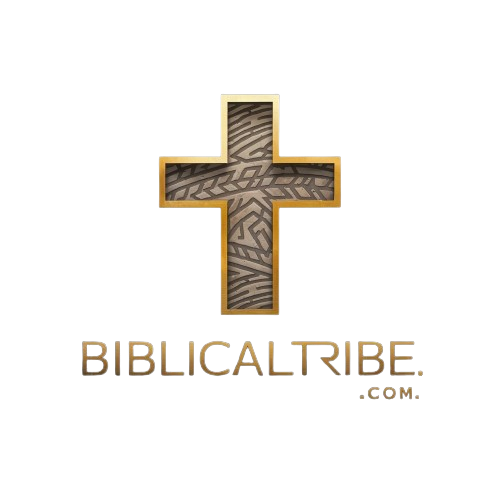Last Updated on July 15, 2025 by Muhammad Ramzan
For centuries genealogists have wanted to go back to biblical times. Many wonder if their ancestors might be connected to people in the scriptures. This sounds exciting, but biblical genealogy requires careful analysis. You need to look at historical records and scientific evidence and be realistic. Modern genealogical tools offer new ways to explore these ancient connections. However, verifying claims that span thousands of years is a big challenge.
This article looks at what makes biblical genealogy unique. It also shows how to explore possible connections with care and curiosity. Even without proof, the journey can be meaningful and insightful.
Biblical Genealogy Research
Biblical genealogy is different from family history research. This is because of the time spans involved and the way ancient record keeping worked.
Uniqueness of Biblical Family Connections
Biblical genealogy poses some difficulties that differ from ordinary ancestry research. The time gap between biblical times and today’s records is vast. Ancient societies recorded genealogies differently. They emphasized tribal affiliations and social structures over individual family lines.
The biblical texts contain genealogical information. Scholars debate their historical accuracy and completeness. Some genealogies are more theological or literary than factual. Cultural practices of ancient times shaped how family ties were recorded. They also affected how those records were kept over time.
Historical Documentation vs. Modern Genealogy
Modern genealogy relies on official documents. These are census and civil registrations that only go back a few centuries. Biblical era documentation is different and for different purposes. Ancient civilizations recorded information for taxes, military duties, and religious events. Sadly, these records seldom lasted through the ages.
Genealogical clues can be given by the archeological findings, and these are normally partial. Historical artifacts yield some information on ancient families. These are clay tablets, inscriptions, and papyrus documents. However, when complete family trees of the biblical times up to date are discovered, this is only infrequent. Professional genealogists emphasize the need to separate verified ancestry from speculative links.
Ancient Family Tree Records and Their Reliability
Evaluating the credibility of ancient genealogical claims requires an understanding of archaeological evidence. It also involves examining how historical documents were transmitted over time.
Archaeological Evidence in Genealogical Research
Archaeological discoveries are the most reliable basis for ancient genealogical research. Excavations in the Middle East have uncovered many inscriptions and burial records. And administrative documents that reference family relationships. These help to establish historical context for biblical stories. And independent verification of some genealogical claims.
Recent archaeological work has shown that ancient civilizations had sophisticated record-keeping systems. Babylonian archives have genealogical information. Egyptian administrative documents and Assyrian royal chronicles sometimes match biblical accounts. But these discoveries are usually about royal families and prominent individuals. They rarely document common ancestry lines.
Manuscript Traditions and Their Limitations
Medieval manuscripts preserve many ancient genealogies. But they’re not all accurate. Scribes throughout history copied and recopied genealogies. Sometimes errors or modifications crept in. Political motivations also influenced genealogical claims. Especially when noble families wanted to establish legitimacy through biblical connections.
Byzantine and Islamic scholars kept extensive genealogies. Some go back to biblical figures. These need to be carefully analyzed to separate fact from fiction. Comparing different manuscript traditions helps to identify what’s consistent. What’s consistent may be the actual genealogy.
Practical Methods for Tracing Ancestry to Biblical Times
Tracing ancestry to biblical times is challenging. It requires both traditional genealogy and input from experts. While absolute proof is rare, a careful approach can help evaluate possible connections.
Begin with Verified Documentation
Researchers attempting to establish biblical family connections should employ systematic approaches. These methods should prioritize documented evidence over speculation. Traditional genealogical methods provide the foundation. You should work backward through verified records before attempting connections to ancient periods.
Gradually Expand Research
According to professional genealogists, beginners should start with recent history of the family. You would gradually branch out in to previous centuries. A good starting point would be the old records and church registers. Your family history can also be determined by immigration documents. The further you get into the past, the less records you can find. And the ones you do find tend also to be less reliable.
Leverage Scholarly Collaboration
Working with scholarly historians and biblical theorists is useful. They can help you evaluate ancient sources. University libraries and research institutions have specialized collections. These collections are focused on genealogical materials related to biblical studies. But these resources need to be interpreted and cross-referenced with multiple sources.
DNA Testing and Biblical Lineage Claims
DNA testing has changed genealogical research. But applying it to biblical ancestry claims requires realistic expectations about what science can do.
Genetic Markers and Ancient Populations
DNA testing can pinpoint genetic markers from ancient Middle Eastern populations. You’ll get a broad picture of where your ancestors came from. But here’s the catch: genetics alone won’t link you to specific biblical figures. Your DNA might show connections across the Middle East, Europe, and North Africa. Lots of people from these areas do share ancestors from biblical times. That’s how population genetics works.
The problem? You cannot point to any individual and say, “That’s my ancestor from the Bible.” The genetic trail just isn’t that precise. However, specific identifications are impossible.
Haplogroup analysis shows migration patterns and population movements during and after biblical times. According to recent studies, about 80% of Jewish populations worldwide share common genetic markers. These markers trace back to the Middle East and date back thousands of years. The same patterns exist for other populations with historical ties to biblical regions. But these findings are general ancestry, not specific biblical lineages.
Common Misconceptions About Biblical Family Trees
Understanding prevalent myths and fabrications helps researchers approach biblical genealogy appropriately. You need skepticism and analytical rigor throughout the process.
Fabricated Medieval Genealogies
Medieval Europe produced numerous fabricated genealogies claiming descent from biblical figures. This particularly occurred among royal and noble families. These documents often lack historical foundation. They were created to support political claims or social status. The “Descent from Adam” charts popular in medieval times represent theological concepts. They don’t represent actual genealogical records.
Renaissance-era genealogists frequently embellished family histories with biblical connections. They did this to satisfy wealthy patrons. These fabricated lineages spread through copied manuscripts and printed books. This created persistent myths that continue circulating today. Critical analysis reveals inconsistencies and impossible timelines in these genealogies.
Steps to Build Your Ancient Family Tree
Successful biblical genealogy research requires methodical documentation. You also need realistic goal-setting throughout the investigation process.
Starting with Verified Historical Records
The development of an ancient family tree starts with laying down good grounds in documented history. The priorities that the researchers should pay attention to are the following:
- List extensive family history of the last 200-300 years.
- Confirm all the information using several independent sources.
- Document geographic movements and cultural affiliations.
- Identify potential connections to historical communities with biblical ties.
- Maintain extensive citations on each genealogical assertion.
The professional genealogist insists upon working chronologically backward. Don’t attempt to connect forward from biblical times. This approach ensures that each generational link meets acceptable standards of historical evidence. Gaps in documentation should be clearly identified. Don’t fill them with speculation.
Conclusion
Biblical genealogy shows us the personal stories of real people from long ago. It shows us how families connected and what mattered to their communities. However, connecting to specific biblical figures is extremely difficult. Modern tools offer new opportunities to explore while highlighting the limitations of ancient records.
These tools are DNA testing, archaeological finds, and digital archives. Successful researchers approach these investigations with academic rigor and healthy skepticism. They also appreciate the historical complexities. While we may never have conclusive proof of biblical ancestry, we can still learn. We gain insight into ancient civilizations and family heritage traditions.










